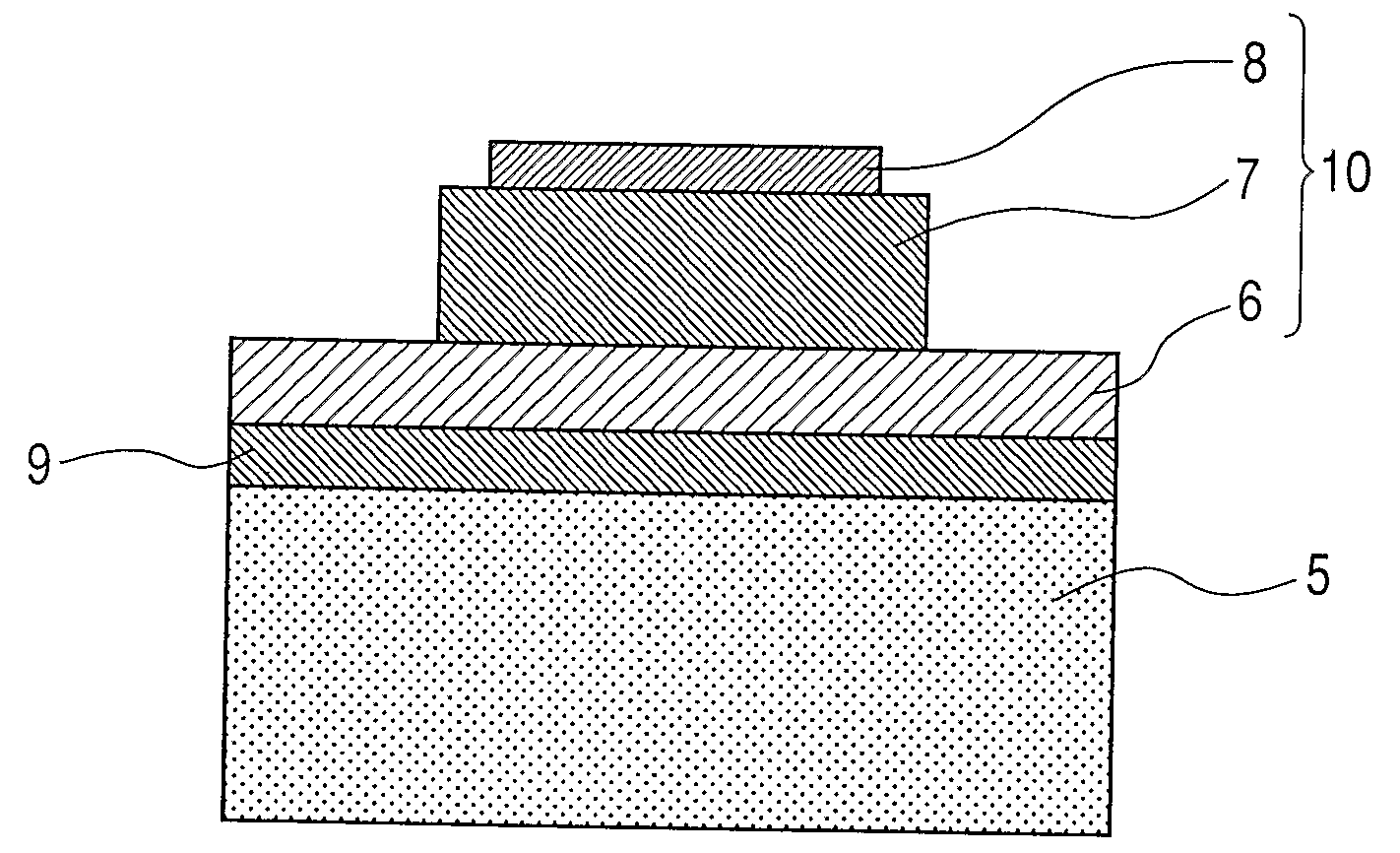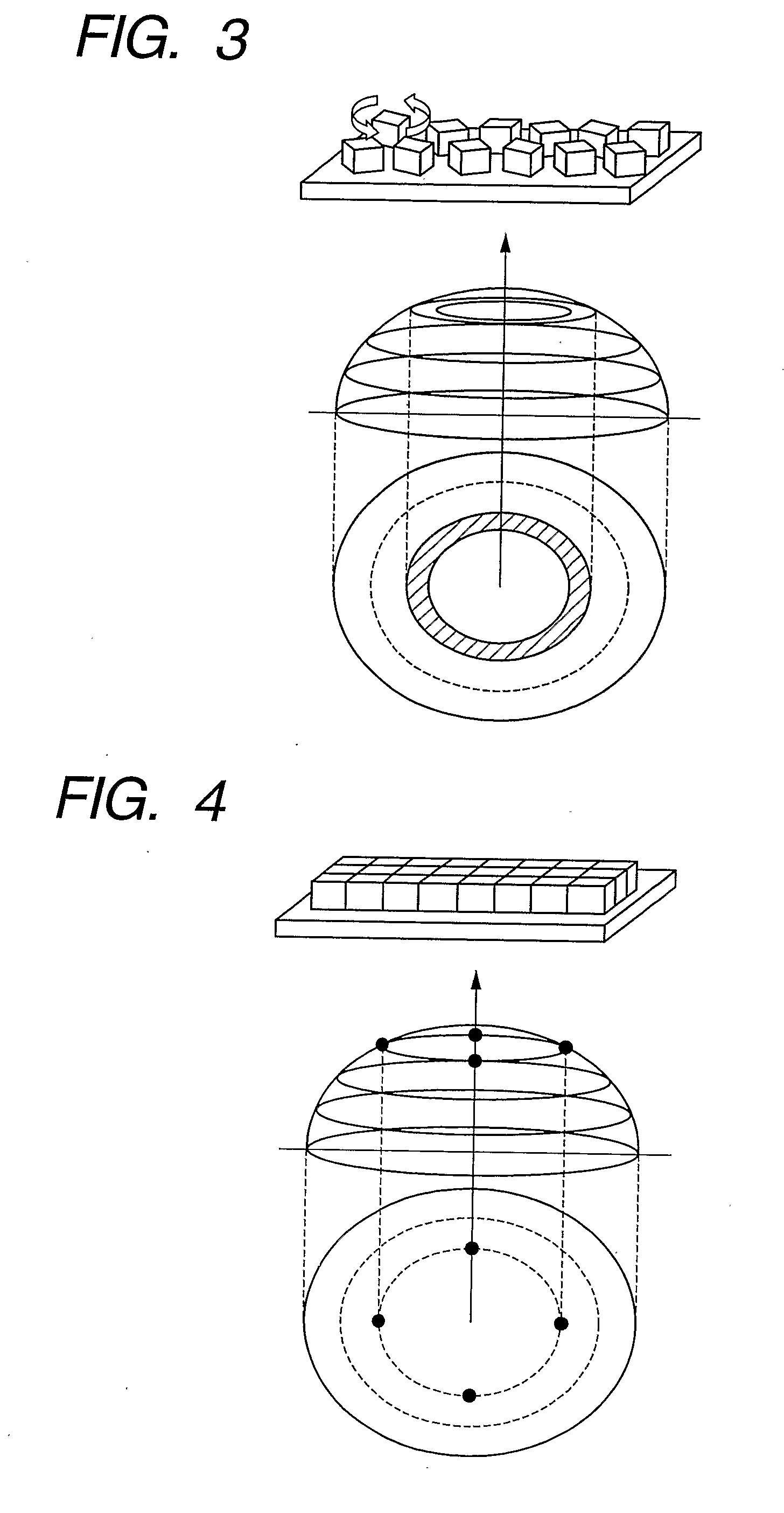Piezoelectric substance, piezoelectric element, and liquid discharge head and liquid discharge apparatus using piezoelectric element
a piezoelectric element and piezoelectric technology, applied in the direction of piezoelectric/electrostrictive device details, device details, device material selection, etc., can solve the problems of high piezoelectricity that is originally expected to not be achieved, and achieve high piezoelectricity that is originally expected to not be achieved, and achieves uniform and high discharge performance. , the effect of large piezoelectricity
- Summary
- Abstract
- Description
- Claims
- Application Information
AI Technical Summary
Benefits of technology
Problems solved by technology
Method used
Image
Examples
embodiments
[0119]Hereafter, the piezoelectric element of the present invention and the liquid discharge head using this, and its production method will be described with citing examples.
example 1
[0120]Production sequence of a piezoelectric thin-film element of a first example is as follows.
[0121]After performing hydrofluoric acid processing of a Si {100} substrate surface, a 100-nm-thick Y-doped ZrO2 film was formed at a substrate temperature of 800° C. by the sputtering method, and then, a 60-nm-thick CeO2 film was formed at a substrate temperature of 800° C. Both were single crystal films with orientation. Further, a 100-nm-thick LaNiO3 (LNO) film was formed on this at a substrate temperature of 850° C. as a lower electrode film by the sputtering method. Furthermore, a 200-nm-thick SrRuO3 (SRO) film was formed at a substrate temperature of 600° C. on this LNO film, and the substrate which had a lower electrode film and the like was obtained. The electrode film and SRO film were single crystal films of orientation.
[0122]PMN-PT with 3.3 μm of film thickness was formed as a film as a piezoelectric film on the above-mentioned lower electrode / buffer layer / substrate by an RF ...
example 2
[0124]Production sequence of a piezoelectric thin-film element of a second example is as follows.
[0125]After performing hydrofluoric acid processing of a Si {100} substrate surface, a 100-nm-thick Y-doped ZrO2 film was formed at a substrate temperature of 800° C. by the sputtering method, and then, a 60-nm-thick CeO2 film was formed at a substrate temperature of 800° C. Both were single crystal films of orientation. Further, a 100-nm-thick LaNiO3 (LNO) film was formed on this at a substrate temperature of 850° C. as a lower electrode film by the sputtering method. Furthermore, a 200-nm-thick SrRuO3 (SRO) film was formed at a substrate temperature of 600° C. on this LNO film, and the substrate which had a lower electrode film and the like was obtained. The electrode film and SRO film were single crystal films of orientation.
[0126]Lead scandium niobate-lead titanate with 4.2 μm of film thickness was formed as a film as a piezoelectric film on the above-mentioned lower electrode / buff...
PUM
| Property | Measurement | Unit |
|---|---|---|
| thickness | aaaaa | aaaaa |
| thickness | aaaaa | aaaaa |
| thickness | aaaaa | aaaaa |
Abstract
Description
Claims
Application Information
 Login to View More
Login to View More - R&D
- Intellectual Property
- Life Sciences
- Materials
- Tech Scout
- Unparalleled Data Quality
- Higher Quality Content
- 60% Fewer Hallucinations
Browse by: Latest US Patents, China's latest patents, Technical Efficacy Thesaurus, Application Domain, Technology Topic, Popular Technical Reports.
© 2025 PatSnap. All rights reserved.Legal|Privacy policy|Modern Slavery Act Transparency Statement|Sitemap|About US| Contact US: help@patsnap.com



